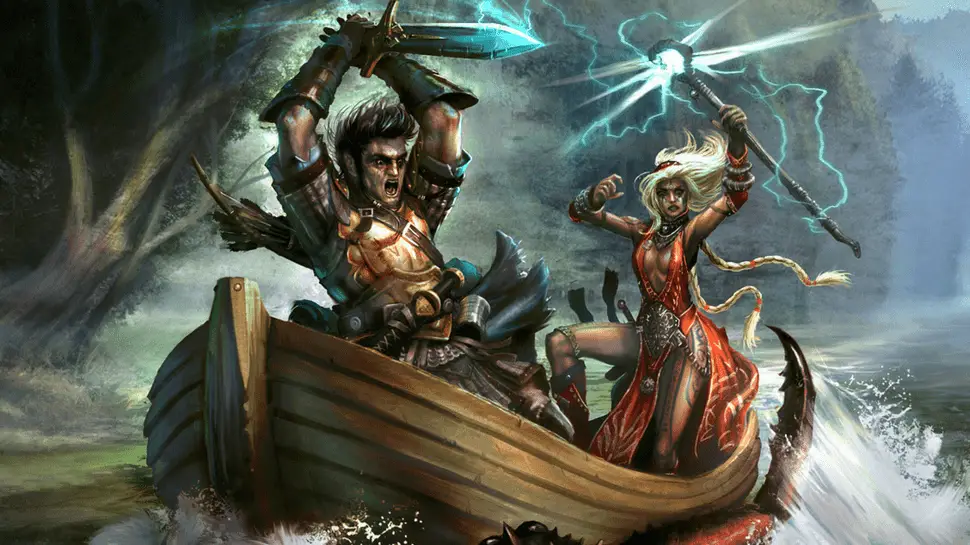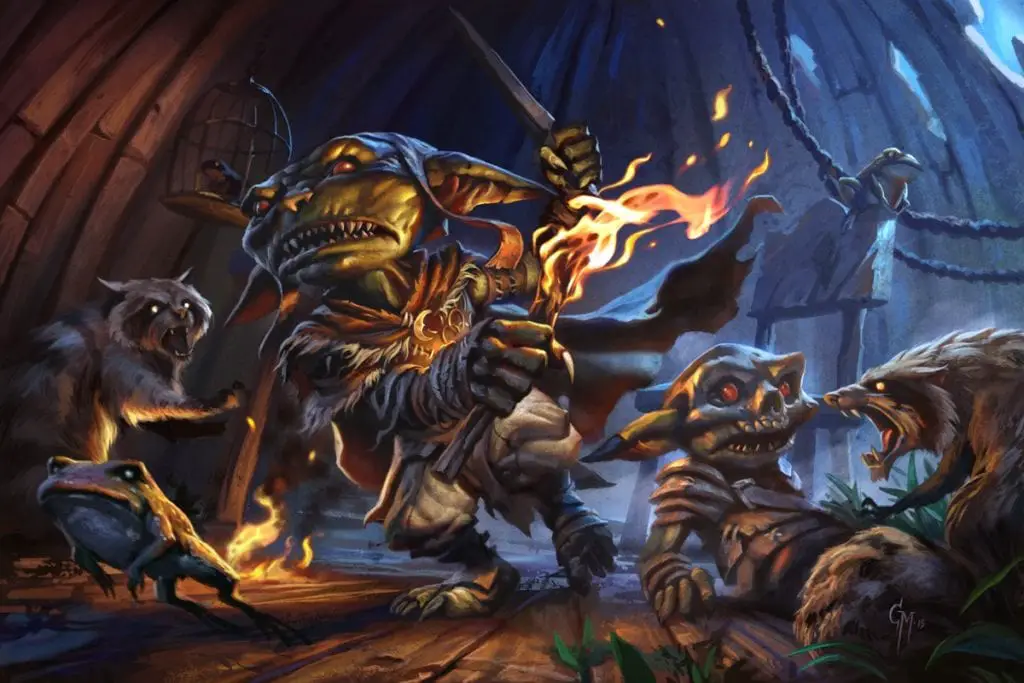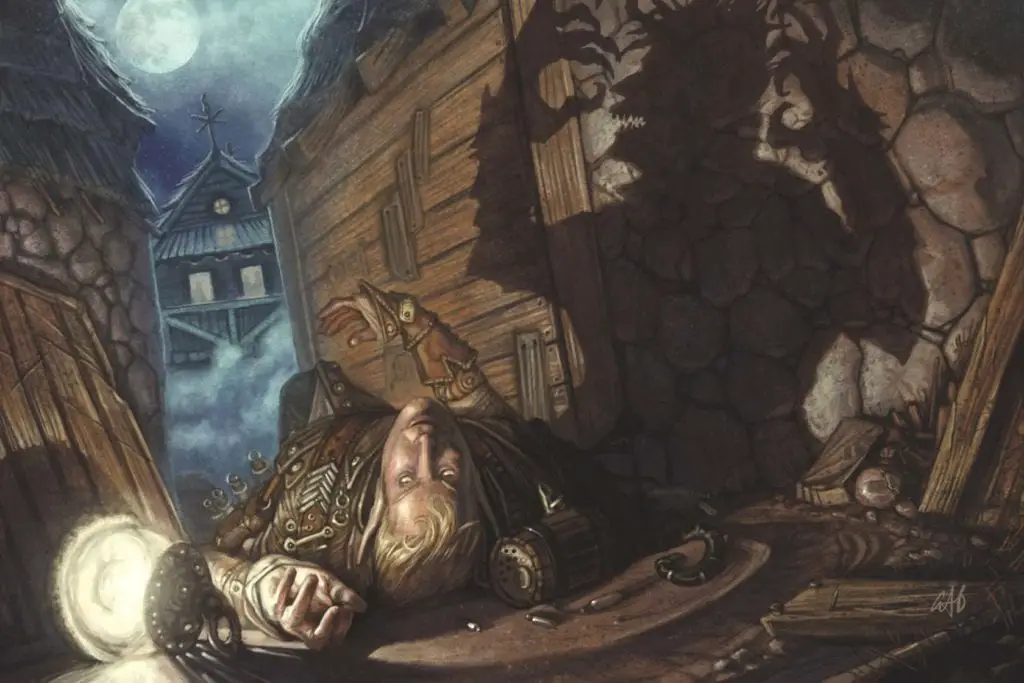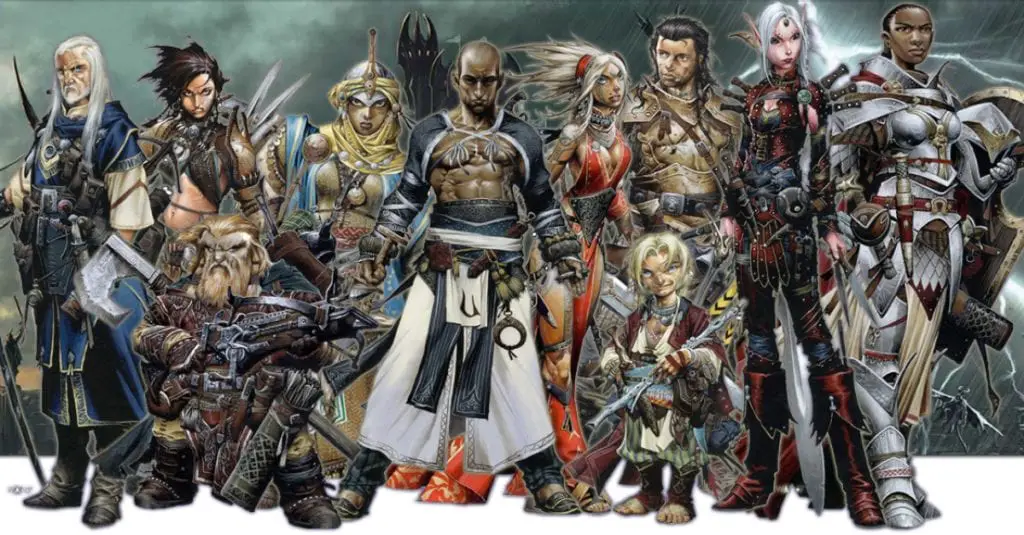A lot can change in ten years. In the years since we first saw Pathfinder hit the shelves we’ve seen three presidents, two editions of Dungeons & Dragons, the rise of e-sports, and a renaissance of tabletop gaming thanks to live play podcasts and Twitch shows. So when Paizo approached their new edition of Pathfinder, they knew they had to adapt their game to a brand new audience of gamers. And rather than toss the whole thing out, they instead tried to build on the things that already made Pathfinder a beloved RPG.
In my interview with Senior Designer Stephen Radney-MacFarland, he emphasized that 2E was still going to be the game so many people knew and loved. And when I finally sat down with the play test rulebook showing off the new edition, that largely held true. But there were a few things that really stuck out to me throughout the course of the book that radically change how players approach the game. So before I get my full review of the new edition out, here are the most impactful changes coming to Golarion in Pathfinder Second Edition.
1. Modular Character Building

A great strength of Pathfinder, and its parent system D&D 3.5, was the extreme flexibility one had in making their character. With the right allocation of skills, scores, feats, etc., one could very easily make a player character that was truly unique, one that broke the mold of their class or race. But the downside of that flexibility was its extreme level of crunch, i.e the sheer amount of math one had to do to make the numbers do what you want. That system became infamous for just how many damn stat tables you had to read to figure out even some of the simpler details of your character. Not to mention the piles of splatbooks and supplementary materials you could get that offered even more options.
For some hardcore gamers, this was just part of the fun. It was almost like a puzzle they had to solve, a challenge of character creation. But for others, it meant that the learning curve of the game was too steep and growing steeper with each new rule book. In their new edition, Paizo needed to find a way to appease both camps. And I think they did.
I can say, without an ounce of hyperbole, that the changes Pathfinder made to character creation and progression are some of the most daring I’ve seen from a major gaming company, especially for a system descended from the Dungeons & Dragons model. The whole system is now based on feats, special abilities or bonuses earned through level up, sort of like the way skill trees work in other RPG media. But now, rather than simply being optional bonuses that could be taken in lieu of ability increases, feats have rather neatly replaced the vast majority of class and ancestry (racial, but we’ll get to that) traits.
Instead of a big list of bonuses, abilities, and traits, you instead get to mix and match from a list of feats. Same goes for classes, where you can pick from a variety of possible play styles and abilities. While eventually some of these choices, like the choice of stance for a monk, lead down a skill path, others do not. This frees you to keep experimenting and changing your character as things go on.
This “snapped together” approach to character building strikes a very good balance between the customization joy of the old system and the more gamified ease of access new games have to strive towards. Making characters feels so much less like a chore than it used to, and you really feel like your character is truly yours at the end of the process. They make sure to include plenty of fluff in the feats as well, letting you weave your character’s story even as you fill out their character sheet.
2. Goblins Join The Party

(EN: The new terminology in Pathfinder replaces the, admittedly inacurrate, term “race” with “ancestry” but I’ve used race for ease of understanding…and because old habits die hard.)
The “standard” array of RPG classes have been essentially set in stone for a few decades now: Human, Elf, Dwarf, Halfling, Gnome, Half-Orc, Half-Elf (who have also changed, becoming human sub-species rather than standalone races). “Monster” races have always been later additions, cropping up in secondary material or as stat blocks in the backs of books. So, seeing the Goblins, a race that have essentially become a mascot of Pathfinder since its inception, as a main playable race was an incredibly refreshing change of pace.
These little guys have lost none of their quirks or comedy, retaining their madcap energy and love of fire, biting, and riding things they probably shouldn’t (all of which are featured as traits). They’re not completely comic relief though, gaining a sympathetic backstory as well as new character traits that paint them as strong survivors with something that almost resembles a pack mentality. Creating a goblin PC means fitting their unique personalty into the classes and stories of Pathfinder, but Paizo gave you all the tools you need. It may seem like a challenge, but people have been making halfling barbarians for years…so it can’t be that hard.
3. Alchemists That Don’t Suck

Ah, the Alchemist. Everyone’s most disappointing character from original flavor of Pathfinder. At best a wizard with a love of props or at worst a sorcerer with a drinking problem, the Alchemist floundered for years as a class that was very cool in the fluff but very lackluster mechanically. As Stephen said in our interview, it always felt like alchemy was just riding magic’s coattails. But in 2E, the Alchemist has finally been made great.
The new Alchemist is now a practitioner of a craft that has existed for as long as magic, a direct competitor with the arcane rather than its stunted little brother. Rather than having to choose between a bomb throwing mad chemist and a Dr.Jekyl/Incredible Hulk-esque mad chemist, Alchemists now get to be both! Although they are all still mad chemists.
They start out with bombs, potions, and alchemical items they can craft as if it were any other item, and many of these can and often should be used by the Alchemist’s party members. Rather than getting bigger and bigger bombs a la a wizard’s spell power ramping up, Alchemists instead start to add different mutagens to their arsenal, from the classic transformation ones that let them become a monster to new ones that can make them more charismatic or more alert. They’ve also gained the ability to quick brew their alchemy, allowing them a level of adaptability a wizard can only dream of. Add in feats that allow an Alchemist to raise the dead or create a Philosopher’s stone and you get a class that can stand up with the rest.
4. New Approaches To Classic Classes

Alchemists weren’t the only ones getting tweaks. In addition to fitting the classes into the new feats system, Paizo also took the opportunity to change things about the other classes in Pathfinder. Some of these are small flavor changes while others represent a brand new direction for the class.
Barbarian– Similar to the changes made by the distinguished competition, the Barbarian has begun to move away from being a badly armored Fighter with anger issues into one more in line with the spiritual warriors they are in the fluff. In 2E, Barbarians have gained access to Totems, special items through which they channel their rage and which give them special powers. My favorite was the Dragon Totem, which lets a Barbarian eventually grow scaly wings.
Bard- Ah, the eternal question of the Bard. Am I a fancy rogue? Am I a limited sorcerer? Rather than continue to mix swordplay with musical magic, Paizo has chosen to make the Bard an outright spellcaster. They are now the premier users of Occult magic, a form of magic that preys on the mental rather than the physical. And, of course, they still can bust out a mean flute solo.
Fighter- Fighters are about the same, combat masters unmatched on the battlefield. What they’ve gained in 2E are feats and abilities that actually back up their reputation, allowing for theatrical twirls, strategic maneuvers, and dirty fighting in equal measure.
Monk- Monks also gain more fitting abilities as Paizo finally adds actual martial arts to their repertoire. Thanks to the additions of Tiger, Dragon, Crane, and Wolf stance, Monks get to stop being flurry of blows machines.
Paladin- Paladins remain a Lawful Good-only class, meaning no edgy chaotic Paladins for you. They’ve also lost their status as some kind of pseudo-Cleric, dropping the magic in exchange for Paladin-only “champion powers” that help define the way they manifest their holy creed.
Ranger- Doubling down on their nature as master hunters, Rangers no longer have favored enemies. Instead, they can mark one enemy at a time to gain combat advantage against, letting them be much more flexible than in the past.
5. The Race Change

Paizo has developed a commitment to diversity in recent years, and they emphasized that they wouldn’t fall down on that front with their new addition. A small but very impactful change made in 2E was the choice to change “race” to “ancestry.” While the term does nothing but change nomenclature (it has no real mechanical effect), it reflects the increasing controversy surrounding the word “race” as used in a fantasy context. A problem began by Tolkien and solidified by Paizo’s elder brother, fantasy races have only come under scrutiny recently as companies realize they should listen to their POC fans (or the POC fans make themselves heard regardless). Seeing this move by one of the biggest RPG developers, symbolic or no, shows not just that Paizo is following through, but that the culture of gaming as a whole might be changing…slowly but surely.
For a full look at the new Pathfinder Playtest, you can go to paizo.com/pathfinderplaytest to download the source material and participate in surveys, as well as pick up hardcopy versions of the new materials up at your local game store or on Paizo’s store. Keep an eye on the Fandomentals for more coverage of all things Paizo and Pathfinder, including a full gameplay review coming very soon.

